Did Tyler O'Neill Simply Have a Fastball Problem in 2020
- Ben Cerutti
- Nov 23, 2020
- 6 min read
Updated: Nov 24, 2020

On the surface, Tyler O'Neill's 2020 season looks pretty cut and dry. On one hand, he was a tremendous LF defender, garnering himself a gold glove as easily the best NL defender in left. Congratulations to Tyler for that. On the other hand, O'Neill was abominable with the bat. He had a 70 wRC+ a year after having a below average 91 wRC+ following up his rookie campaign that saw him have a 116 wRC+. Oh how the sort-of-not-really mighty have fallen.
Tyler O'Neill has - for three straight seasons now - lived in small sample size purgatory (142-157 plate appearances and 50-61 games played) with the St. Louis Cardinals, which will likely leave them in the same boat of trying to figure out "what they have" in Tyler O'Neill in 2021. For the record, I am fine (read: happy) with them continuing to give O'Neill time in finding out what they have. I believe that with consistent, healthy playing time O'Neill could be their best bet in the outfield. I am very much less gung ho about that statement than I have been the last two offseasons however, as he continues to get worse and worse per wRC+ with each small sample size theatre season.
I'm here to say that we may have seen Tyler O'Neill take some steps forward in 2020. Much like I did when I looked at Bader's poor results in 2019 at the plate, now I'm going to take a look at Tyler O'Neill's and see if there is any sort of optimism possible coming off of a 70 wRC+ campaign. Why? Because having two potential gold glove outfielders in the same outfield who can also manage a bat at all would be preferable in my mind.
Tyler O'Neill definitely did make some steps forward in 2020. Looking through the data, there is no doubt in my mind about that. There is some other data that makes me even more worried than the typical narratives surrounding Tyler's bat. What narratives might those be?
Narrative #1 - Tyler O'Neill swings and misses too much.
Narrative #2 - Tyler O'Neill has trouble with the breaking ball.
I don't want to say that we can just go ahead and dispel the two rumors listed above. We can't. As for Narrative #1, there will be a portion of the fan base that says #1 is true until he's striking out at Yadier Molina levels or lower. Those people won't be appeased. However, Tyler O'Neill has taken his K rate from 40.1% to 35.1% to 27.4% over the past three seasons of small sample size. He basically cut out one of every eight strikeouts from 2018-2019 and then cut it again from 2019-2020, this time by 2 out of every 9 strikeouts. His K rate is around 2/3 of what it was two years ago. In that same time, he's basically doubled how often he works his way on base via walk.
Let's break that down further. His strikeouts on fastballs have dropped from 33.8% to 26.9% to 20.5%. His strikeouts on offspeed pitches have dropped from 27.3% to 31.3% (yes, a slight bump) to 10%. His strikeouts on breaking balls have dropped from 50.9% to 47.1% to 39.1%. That last one leads us into the next narrative quite nicely.
Narrative number two is right in that he struggles more with the breaking ball than he does with either fastballs or offspeed pitches. However, here's where we can look at it a bit differently. Tyler O'Neill is making progress on breaking pitches. Here is Tyler O'Neill's year-to-year progressions on fastballs, offspeed pitches, and breaking balls in a variety of categories..

I will be looking with you at a few of those rows and columns. All 3 of the different types are listed chronologically top to bottom. As you can see, pitchers threw him less fastballs and more breaking balls in 2020 than in any other year. His K% dropped greatly in all three pitch type categories in 2020. His isolated slugging, which measures how many extra bases a player averages per at bat, dropped in all three categories from 2018-2019, but rose from 2019-2020.
O'Neill's batting average and on base percentage were the worst of his career on both fastballs and offspeed pitches (as they both were overall in 2020). BUT, look at the bottom section with breaking balls. O'Neill has gone from a .113 to a .176 to a .186 in batting average. Look, I know .186 is not a good bating average. But it's progress. His OBP on breaking balls went from .158 to .176 to .250. Look, I know a .250 OBP is not good. But it's a lot of progress. His OPS on breaking balls jumping from .384 to .431 to .589 is also a lot of progress, despite a .589 OPS being not great.
Earlier, I wrote, "There is some other data that makes me even more worried than the typical narratives surrounding Tyler's bat." What worries me much more is O'Neill's numbers on fastballs and on offspeed pitches. Tyler O'Neill was an absolute MASHER on fastballs in 2018. A .442 wOBA was what only Mookie Betts and Mike Trout were putting up in 2018 (that's on all pitches, not just fastballs). So on fastballs alone, Tyler O'Neill hit like a top 3 hitter in baseball. That year, his OPS and wOBA were better on offspeed pitches! He was Barry Bonds against offspeed pitches. In 2020, Tyler O'Neill hit .155/.265/.352/.617 on fastballs. That's putrid. His OPS against offspeed pitches was still good - over .800 - but that's just 2/3 of what it was against them in 2018. When you can't hit the fastball, you can't hit the offspeed pitches as well because you put yourself into a situation where your bat speed gets to be caught in between. (Aside: I think that's what has happened to Matt Carpenter in the couple of seasons.)

So where are the positives?
Tyler O'Neill has shown the propensity to be an .800-1.000 OPS guy against the fastball in the past.
Tyler O'Neill has shown the propensity to be a 1.000-1.200 OPS guy against offspeed pitches in the past.
Tyler O'Neill has recently shown that he can be around a .600 OPS guy against breaking balls - maybe even better if he keeps progressing.
That guy is completely playable.
Another positive is that Tyler O'Neill also got supremely unlucky this year. From 2018-2019, when Tyler O'Neill hit a ball hard (95+ mph) in the sweet spot (8 degrees to 32 degrees launch angle), he hit .731/.704/1.808/2.512 for a .995 wOBA. In 2020, when he hit the ball the same, he dropped to a .545/.545/1.091/1.636 line. That's a decrease in OPS of nearly 35 on similarly hit balls! That's ridiculous.
Here are his outs on those batted balls in 2020; the expected batting averages on these 5 swings was between .350 and .721 and the expected slugging percentages were between .708 and 1.768!
Furthermore, 21 of the 104 pitches that Tyler O'Neill took for strikes this year were (according to Baseball Savant data) outside of the strike zone. That's just over 1 out of every 5 strikes that he took that were given to the pitcher. He was called out on strikes on 5 of those, another 4 of them were the first pitch of a plate appearance to take him to 0-1 instead of 1-0, and another 4 of them were on 1-1 counts making it a 1-2 count instead of a 2-1 count. Lastly, two of them took a walk away from Mr. O'Neill (one of them replacing it with a strikeout instead).
Why are those numbers important? Here are the stats on being ahead in the count vs. being behind in the count league wide in 2020:
Ahead: .282/.472/.509/.981, .421 wOBA
Behind: .199/.210/.319/.529, .222 wOBA
On the other side of that, he had 9 pitches in the strike zone called a ball. That's out of 211 pitches called balls on O'Neill this year. That's just under 4.3% of balls that should have been strikes.
League average numbers for those were:
16.1% of strikes called that should have been balls, meaning O'Neill had 25% more of those than the average player.)
5.3% of balls called that should have been strikes, meaning O'Neill had 18.9% less of those than the average player.)
All in all, Tyler O'Neill got absolutely screwed by umpiring calls this year on both ends of the spectrum. Here was the most egregious of them:

The problem that will come to pass is if O'Neill continues the reverse trend where now he's continuing his upward trajectory on breaking balls at the expense of the fastball. Because if he's doing that and doesn't hit the fastball or offspeed pitches, the trend for pitchers will quickly break in that direction in which O'Neill sees only 40% breaking balls, then 35%, then 30%...and he's out of the league because he can't re-adjust.
Then, instead of being able to say, "That guy is completely playable" the tune would have to quickly turn to, "Who is the next guy up, because this guy ain't it." I don't think we're there yet with all of the positives that come from small samples and improvements that didn't show up in the box score. I think the best is yet to come from Mr. O'Neill. I hope so for sure. Let's see what 2021 brings.


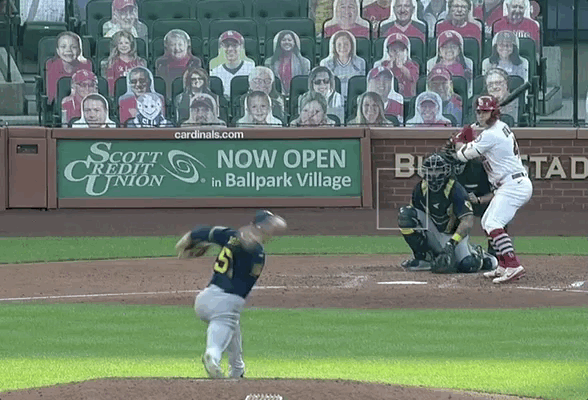
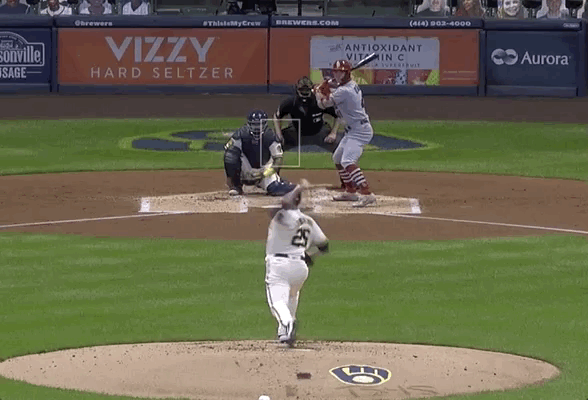
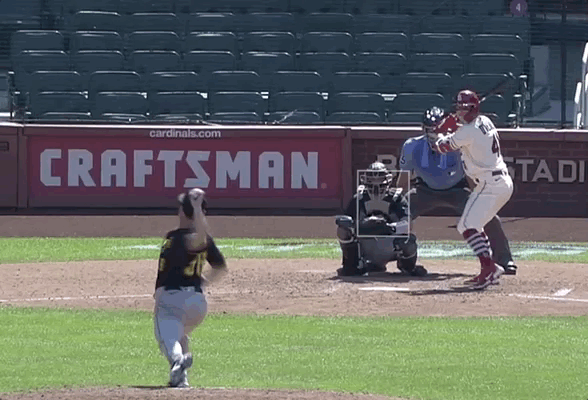
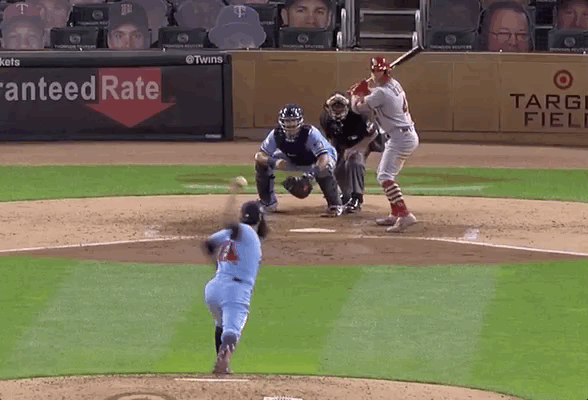
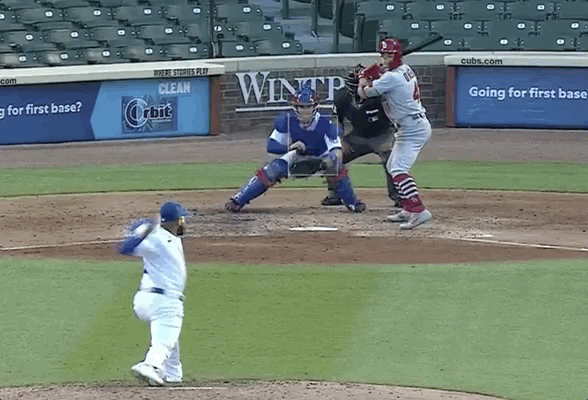
Comments